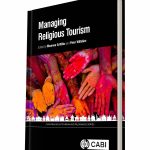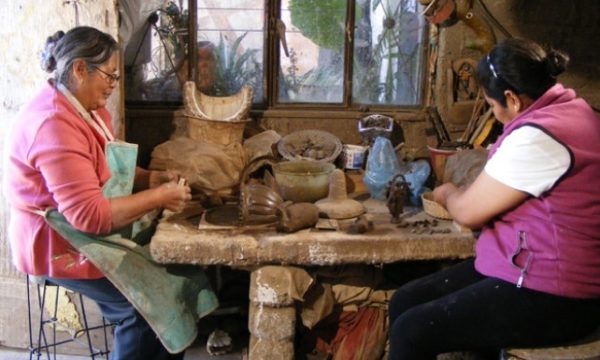Religious tourism is one of the earliest forms of tourism and is a fast growing market. Here, Peter Wiltshier, Consultant Researcher Community & Tourism Development NZ at Research Consultancy NZ, New Zealand, explains what it is and why it is so important.

View to Jerusalem old city, Israel
What is religious tourism?
Religious tourism has taken place since the dawn of civilisation. Pilgrims travelled to pay homage to the sacred places and their guardians throughout the world. Tourism to sacred sites has merged with pilgrimage in the past 2,000 years. More recently, in the past 200 years wealthy Europeans visited special sites of sacred ritual in both the New World and throughout Europe.
Why is it so important?
Sites of special sacred significance have been visited for millennia. What is now important is that these sites need protection, conservation and interpretation. There are few guardians of these special places of worship and visitation and even fewer sources of funds to maintain and manage sites for visitors and worshippers. We do make a distinction between worshippers and visitors, as the religious sites cater for both in roughly equal amounts at some very special places like Lourdes in France and Fatima in Portugal.
Religious tourism in history
The management of religious tourism presents many challenges that are unique in both breadth and application. Sites of religious significance have existed since biblical times and pilgrimage in the Judeo-Christian context is mentioned in the Old Testament of the Bible, for example, in the story of Elkanah, who travels annually to Shiloh to worship and sacrifice (1 Samuel 1:1-28). It is also present in the New Testament Pentecost story, when Jews from all over the world went to Jerusalem for the Passover (Acts 2: 1-12). Many of these sites still exist and other sites, although not as old, have considerable heritage value. The management of heritage sites present particular problems, one of which relates to the cost of maintenance.
Managing sites of religious tourism
Most religious sites are owned by religious organisations, and this may cause challenges for their management, as they must balance the needs of worshippers with those of their visitors. Mosques are at the centre of Islamic tourism and are visited by both Muslims and non-Muslims alike. Muslims may visit mosques while travelling as a tourist attraction or as a place of worship. Many mosques have a dual role, functioning as both a place of worship and as a community centre. The role of community centre means that the mosque will be open for functions and festivities that are not strictly religious in nature and may include non-Muslims.
Muslim countries, such as those in the Organization of Islamic Cooperation (OIC) welcome tourism, especially religious tourism. But they make a distinction between pilgrimage, the most well know being the Hajj, and other forms of religious tourism. While non-Muslims are welcome at sites such as mosques, they are not welcome at the Hajj. The Hajj is one of the most important forms of pilgrimage today with millions of Muslims travelling to Makkah (Mecca) in Saudi Arabia and, without question, the most important Muslim pilgrimage. It is therefore important to distinguish between Muslim travellers to Muslim sites and non-Muslim visitors to these sites. For example, it is not acceptable for non-Muslims to enter the region of Hejaz where the cities of Mecca and Medina are located. There is some conflict related to ‘ownership’ of these sites, and this is discussed below. Other religions have similar problems in relation to conflicting motivations.
Visitors and worshippers
One of the conflicts that has been noted is between visitors to religious sites and worshippers. While many visitors see worshippers as part of the experience, some worshippers do not like the feeling of being observed. Worshippers do not want to feel that they are part of a ‘show’, but are happy to share their religious space, and are proud of the architecture and history that attracts visitors to the site. Sacredness does not readily cross cultural boundaries. What is viewed as sacred by one group, such as congregants, may be seen as culturally interesting by another visitor group. Given that some visitors may wish to engage in worship, Church authorities may need to determine when a request to participate in a service should be accepted as an expression of genuine interest and/or intention.
Developing sites of special significance requires the dissemination and sharing of both intellectual and practical contributions to meet those needs in a planned and stakeholder-driven approach. Traditional approaches to development emerged half a century ago with a focus on core competencies and the agreed understanding that open and fair competition would raise quality and assure reasonable profit margins. It is important to create awareness of services and products and map those to marketing practices.
Analysis and synthesis through primary research enable cleric and manager to grasp visitors’ and worshippers’ needs and develop audiences for sites. In the book, we present the importance of maintenance and plans for developing sites to accommodate factors in both internal and external environments that acknowledge the requirement to remain competitive.
How can religious tourism sites stay competitive?
The importance of networks, grappling with the wider community and perhaps establishing a wider, even global, reach, is appraised as important. In seeking to tap into resources traditionally not employed in managing religious and pilgrimage sites, we elevate the need for an enterprise culture.
Our book features great practices for supporting tourism to sites of worship and pilgrimage from China and Nepal through to Salt Lake City, Australia and diverse but important sites in England, Hungary, Spain, and Ireland. Emerging practices in festival and event management at these sites are coupled with new interpretation through the use of virtual reality technology. Emerging good practices for emulation come with sites that are now employing funding managers prepared to manage the risks of increased visitation against the pressures to conserve and protect the ancient sites at the centre of the visitor experience.

This post also appears on the University of Derby blog.
Managing Religious Tourism is now available from the CABI Bookshop.
You might also be interested in reading From too many to too few: the impact of COVID-19 on overtourism
Related News & Blogs
From too many to too few: the impact of COVID-19 on overtourism
A few months ago 2020 was predicted to be a record-breaking year for tourism, continuing the apparently unending pattern of annual growth recorded since the tourism industry began collecting data on numbers of people travelling. Even allowing for the f…
2 June 2020




